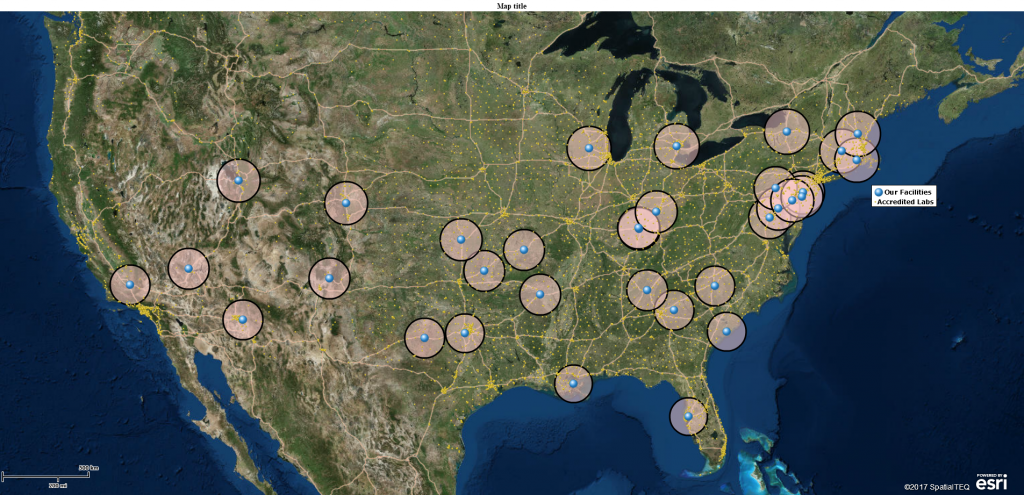Being able to conduct both a forward and an inverse spatial query is pretty cool. Especially at age fifty-eight years old. But, being able to conduct forward and inverse spatial queries across up to 200 locations points at one time? Well, let’s just say there’s a line of ladies waiting to speak with me at the local assisted living center whenever I go in there. “Are you the man who can conduct radius-based spatial queries across up to 200 locations at one time using affordable business mapping software?” They often ask.
“Why yes.” I answer confidently. “That’s me.”
“Would you like some nice red Jello?”
Life just doesn’t get any better than red Jello.
But, my extraordinary powers of attraction aside, Map Business Online is indeed a powerful tool to keep on hand for all types of business and market analysis.
A spatial query, for those of you not familiar with the business mapping jargon, means the business mapping user draws a shape on a map and queries all the locations points, ZIP codes, Census tracts, you name it, within that shape – or map object – as we say in the biz. All those records of imported data, located within your map object, are displayed in a database view. Save that results table and share it with your compatriots, business associates and elder friends.
Business people use spatial queries for a variety of reasons, such as:
· A sales person planning a sales trip who wants to be aware of all of the business opportunities within a radius of his primary destination.
· Procurement professionals often establish map databases of approved vendors for services and supply pick-ups, critical to field staff. This way a field staffer can refer to a shared map to determine where they can pick-up emergency supplies or services and stay with company procurement guidelines.
· Car and equipment rental agencies establish national asset portfolios of used equipment ready for liquidation in appropriate markets. A spatial query can quickly display where those assets are located and any pertinent information about their disposition.
· Business intelligence professionals challenged with manipulating and presenting a variety of business data sets use spatial queries to turn overwhelming data into easy-to-digest geographic visualizations – spoon-feeding just the right information to their target audiences.
Inverse Spatial Queries answer the next question. The first question is typically, “How many records are there within that circle?” The next question is often, “Now how many records are there outside of that circle?” I see this time and again, as people conduct their spatial searches.
Map Business Online Spatial Search
The process for an inverse Spatial Search in Map Business online is straight forward. Below I’ve outlined first a standard spatial radius search and then the inverse:
- Create a radius search over your area of interest at a selected radius distance. You should already have imported business data on the map or have a searchable map layer turned on, like ZIP codes.
- Choose the data layer you want to search – your imported data or a map layer.
- Name the search results, save or export as required. This result is for all the data inside your radius map object.
The Inverse Spatial Search
- Repeat steps 1 & 2 from above using the same map object.
- Choose the same data layer you searched before.
- Select the Upper Left Check box for Inverse Spatial Search.
- Name the search results, save or export as required. This result is for all the data outside your radius map object – an inverse spatial search.
In the Map & Data box an Map Business Online user can click the toolbar’s Edit Gear and choose to adjust the Edit Search Options. Here you the user decide how data will be treated if it is intersecting your map object line. Does it intersect at all, or intersect at 50% or should the data be fully inside your map object to be counted? You decide.
And for that full-out, multi-map-object spatial query full year and team subscribers should access the market Analysis button on the master tool bar. Eight buttons in from the left, it looks like a bow and arrow target.
Choose the first option, which allows the user to place up to 200 circles around points on the map. From there proceed as outlined above. Conduct your inside spatial search of all those circles and get the results for up to 200 map objects. That’s lot’s of data – especially when you do the inverse search. But how cool is that?
I’ll be visiting my Nana next week. I don’t want things to get spatially crazy. I’ll be in disguise, to keep things on the down-low.
NEW! Refer a business associate to Map Business Online in exchange for a $20 Amazon Gift Card!
Find out why over 25,000 business users log into www.MapBusinessOnline.com for their business mapping software and advanced sales territory mapping solution.
Contact: Geoffrey Ives geoffives@spatialteq.com or Jason Henderson jhenderson@spatialteq.com (800) 425-9035
MapPoint users please consider www.MapBusinessOnline.com as your MapPoint Replacement.
Please read customer reviews or review us at Capterra, G2Crowd (LinkedIn connected), or at the Salesforce.com AppExchange.

